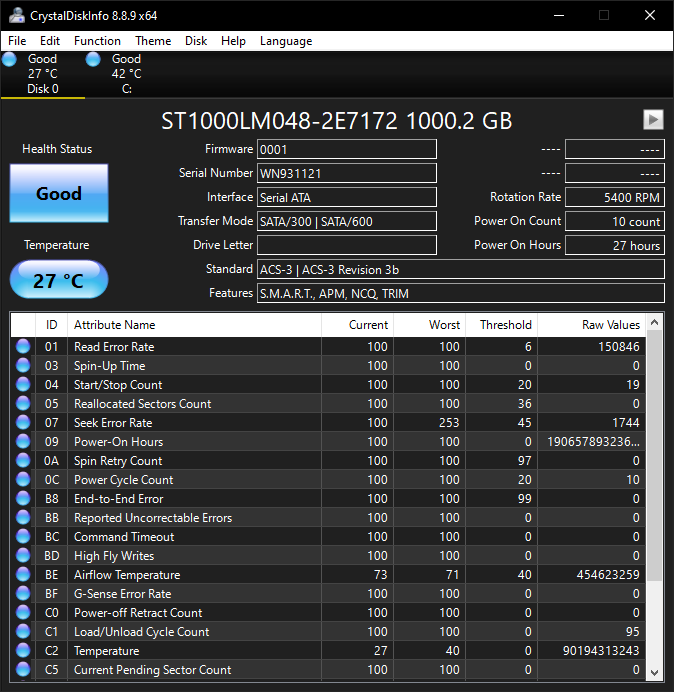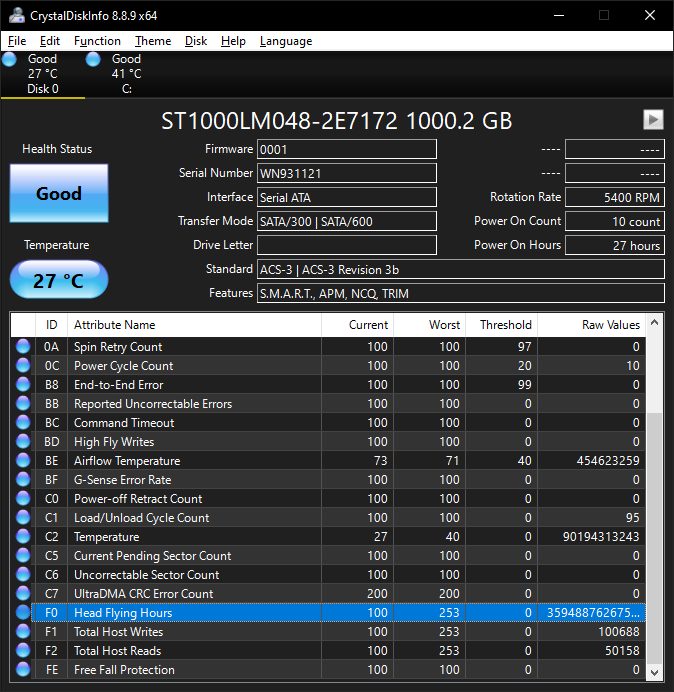Hi!
I just bought this Seagate ST1000LM048 and installed it on a caddy to accompany my also new SSD. And these are the SMART values:


I cannot make much sense from these values, but the Power-on Hours, Airflow Temperature, and Read/Seek Error Rate are driving me crazy. Especially because on startup, and every now and then, the HDD makes a clicking noise. I had my WD Red for 7 years and witnessed such high values and clicking noises only during its last 6 months. What is wrong with this? Is there a chance that it's not a new HDD and it has been refurbished?
p.s. and is it okay that my BX500 SSD shows a temp of 42 C degrees after doing literally nothing other than surfing the web for 30 mins?
Thank you in advance!
I just bought this Seagate ST1000LM048 and installed it on a caddy to accompany my also new SSD. And these are the SMART values:


I cannot make much sense from these values, but the Power-on Hours, Airflow Temperature, and Read/Seek Error Rate are driving me crazy. Especially because on startup, and every now and then, the HDD makes a clicking noise. I had my WD Red for 7 years and witnessed such high values and clicking noises only during its last 6 months. What is wrong with this? Is there a chance that it's not a new HDD and it has been refurbished?
p.s. and is it okay that my BX500 SSD shows a temp of 42 C degrees after doing literally nothing other than surfing the web for 30 mins?
Thank you in advance!

